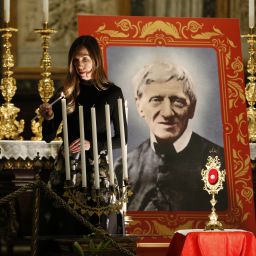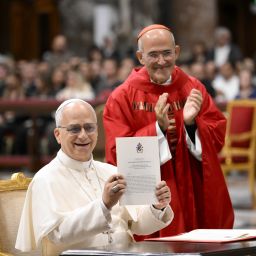By Father John Flader
The Catholic Weekly, OSV News
With Pope Leo XIV set to proclaim St. John Henry Newman as a doctor of the Church Nov. 1, consider what criterion is used to make this decision, whether a layperson could be named a doctor, and what sort of writings Church doctors must have produced to be given this title.
First of all, the word “doctor” in this sense does not refer to the person who treats the flu, nor to someone who fixes the ailments of the Catholic Church. The word comes from the Latin verb “docere,” meaning “to teach,” and so a “doctor” in Latin is a teacher.
This meaning is preserved in the academic world, where the highest degree awarded is a doctorate.
In order for someone to receive the title doctor of the Church, there are three requirements. The first is that the person must be eminent in doctrine; and naturally their writings must be faithful to Church teaching.
If, like Newman, they had been a non-Catholic for a time and had written something that was not orthodox, those writings would be ignored in favour of their writings as a Catholic.
Similarly, ecclesiastical writers who embraced certain heresies of their day, like Origen and Tertullian, cannot be doctors of the Church, even though their other writings are frequently quoted.
While a doctor’s writings must be eminent, of importance for the Church, it is not required that they be numerous.
For example, while St. Augustine and St. Thomas Aquinas left copious writings, others like St. Catherine of Siena and St. Thérèse of Lisieux wrote comparatively little.
The second requirement is that the doctors themselves must have a high degree of holiness and be canonized saints.
Thus, an eminent theologian such as Cardinal Joseph Ratzinger — Pope Benedict XVI — could not be named a doctor of the Church, unless he were first canonized.
And third, it must be the pope himself who names someone a doctor of the Church. The first pope to do so was Pope Boniface VIII, who in 1298 proclaimed as doctors the four great Western Fathers of the Church: Sts. Ambrose, Augustine, Jerome, and Gregory the Great.
Corresponding to these were four great Eastern Fathers of the same period: Sts. John Chrysostom, Basil the Great, Gregory of Nazianzus, and Athanasius.
Although they had been considered as doctors early on, it was Pope Pius V who officially recognized them as such in 1568. Pope Pius V also declared his fellow Dominican St. Thomas Aquinas a doctor, and Pope Sixtus V added St. Bonaventure in 1588.
The number of doctors remained at 10 until the 18th century, when the number gradually increased up to the current time.
At present, counting St. John Henry Newman, there are 38 doctors of the Church. Four of these are women: Sts. Teresa of Avila, Catherine of Siena, Thérèse of Lisieux, and Hildegard of Bingen.
As regards whether a layperson can be named a doctor of the Church, St. Catherine of Siena was a laywoman, a member of what would later become the Third Order of St. Dominic.
The most recent saints to be declared doctors were St. Thérèse of Lisieux by St. John Paul II in 1997, Sts. John of Avila and Hildegard of Bingen by Pope Benedict XVI in 2012, Sts. Gregory of Narek and Irenaeus of Lyon by Pope Francis in 2022, and St. John Henry Newman by Pope Leo XIV in 2025, on the feast of All Saints.
In recent times, a number of recommendations have been suggested to be named doctors of the Church.
An obvious one is St. John Paul II. In October 2019, the Polish bishops’ conference formally petitioned Pope Francis to consider making him a doctor of the Church in recognition of his contributions to theology, philosophy, and Catholic literature, as well as the numerous formal documents of his papacy.
Another one is St. Teresa Benedicta of the Cross, a Discalced Carmelite, who was born Edith Stein (1891-1942). She had studied philosophy under the phenomenologist Edmund Husserl and wrote several books on philosophy, striving to combine phenomenology with the philosophy of St. Thomas Aquinas. She was murdered in the gas chamber at the concentration camp Auschwitz II-Birkenau on Aug. 9, 1942. She came from a German Jewish family and converted to Catholicism in 1922.
In April 2024, during a private audience, the superior general of the Discalced Carmelites, Father Miguel Márquez Calle, made a formal request to Pope Francis to declare her a doctor of the Church.
Cutline for featured image: Sts. Thomas Aquinas, John Henry Newman, Thérèse of Lisieux, and Augustine of Hippo are pictured in a combination photo. Pope Leo XIV will proclaim St. John Henry Newman a doctor of the Church on Nov. 1, 2025. (OSV News files/Nancy Wiechec, Crosiers, Carmel de Lisieux)



